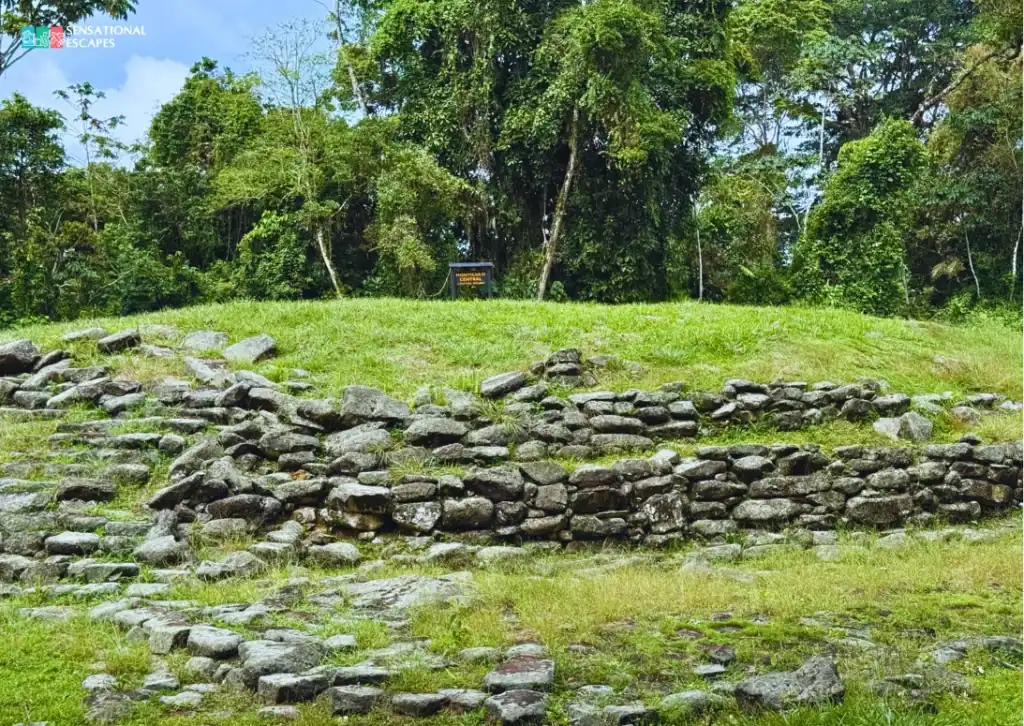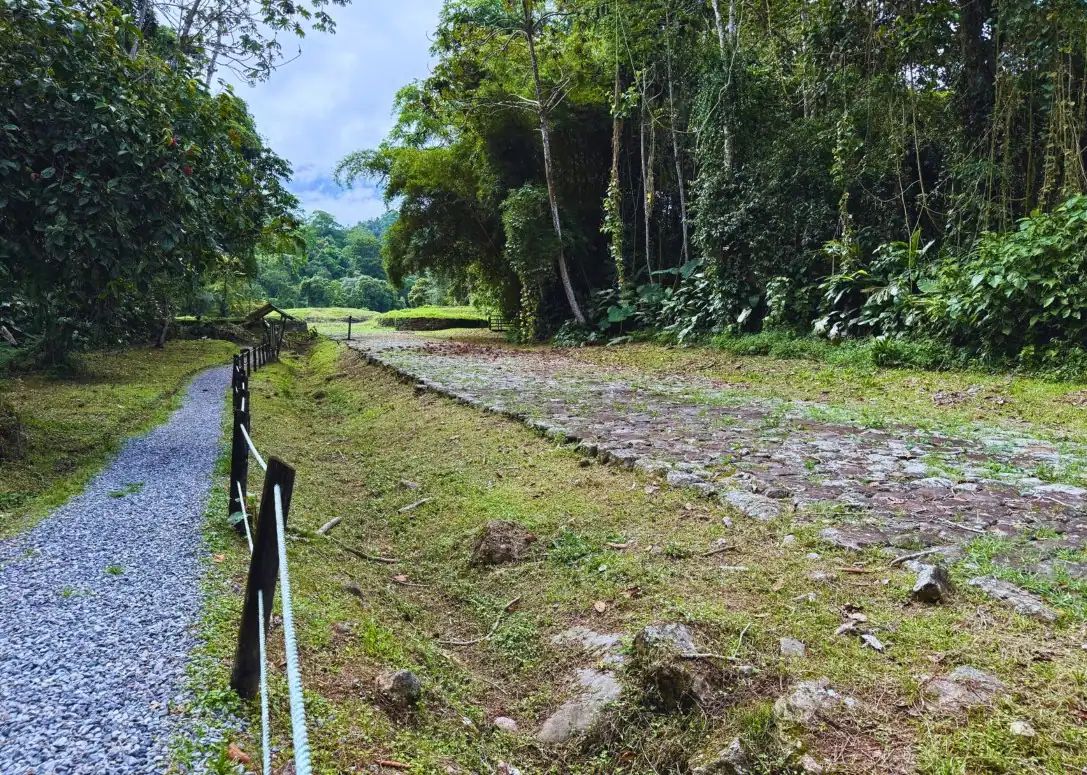Guayabo National Monument: Costa Rica’s Mysterious Ancient Ruins
Table of Contents

Guayabo National Monument is one of those places you learn about early if you grow up in Costa Rica. I remember studying it in school, but I hadn’t been back in years. Recently, while we were already in Turrialba, I decided to take some friends to see it—they were visiting for the first time. It was a good chance to revisit the site with fresh eyes.
Guayabo covers over 230 hectares and holds the remains of a pre-Hispanic city that may have been home to thousands of people. No one knows for sure who lived there, or why they left. But what’s clear is that they built something very advanced for their time—stone roads, canals, foundations, and even an aqueduct that still works today.
In this article, I’ll share what makes Guayabo Ancient Ruins so interesting, why it continues to be a mystery, and what you can expect if you ever decide to check it out yourself.
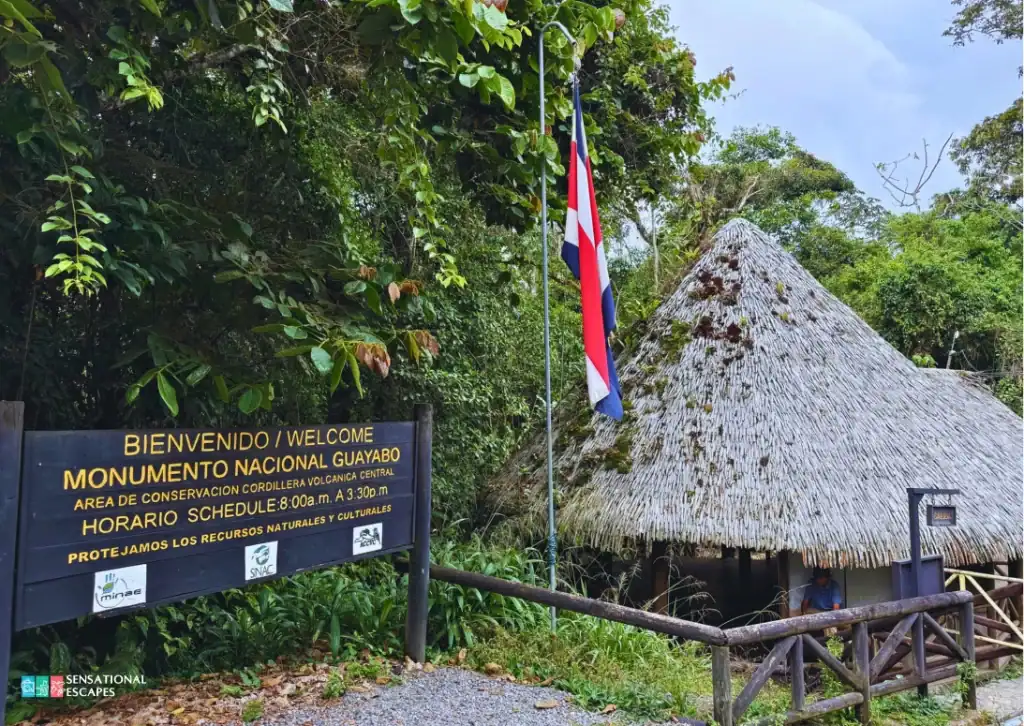
Getting There
By Car
If you’re planning to visit Guayabo National Monument by car, it’s very doable from several parts of Costa Rica. I’ve made the trip a few times, and it’s straightforward, especially if you’re coming from San José. The park is about 65 kilometers away from the capital, and under normal conditions, the drive takes around two hours. However, depending on traffic and ongoing roadwork, you might need a bit more time. The road is fully paved and in good condition, so there’s no need for a 4×4.
Once you pass the small town of Cot, the road gets curvier and narrow in some areas, so you’ll want to take it slow. Even though it’s not a long trip, I always tell friends to enjoy the drive because the views along the way are worth it. You’ll pass through towns like Pacayas and Capellades, which have their own simple charm and make the route feel more like a local experience than a straight shot to a tourist destination.
If you’re coming from Liberia, it’s a much longer drive—around 5 hours and about 285 kilometers. Again, the whole road is paved, and generally in good condition, but you might hit a few sections under repair, which can slow things down. For travelers landing in Liberia, I usually recommend spending a night or two in San José, Cartago, or even closer in Turrialba before making the trip to Guayabo. It just makes the travel more manageable and gives you time to rest before heading into the mountains.
By Public Transportation
If you’re planning to visit Guayabo National Monument using public transportation, the first step is to get to Turrialba.
There’s no direct bus from San José to the ruins, so you’ll need to make your way to Turrialba first. Buses from San José leave every 30 minutes starting at 5 a.m. until about 10 p.m. They leave from the Transtusa terminal in the capital and the ride usually takes around 2.5 to 3 hours, depending on traffic
Once you’re in Turrialba, you can catch a local bus that goes directly to Guayabo National Monument. This bus also leaves from the Transtusa terminal in Turrialba, but keep in mind that there aren’t many departures. From Monday to Saturday, there are only three trips a day, and on Sundays, just two. So, it’s important to check the schedule in advance and plan your visit around those times.
If the bus schedule doesn’t work for you, taking a taxi or an Uber from Turrialba is another option. But keep in mind that the area around Guayabo is rural, so it’s not easy to find a ride on the spot once you’re at the park. If you decide to go this option, it’s best to arrange a ride from Turrialba and talk to the driver about waiting or picking you up for the return. The cost for a one-way trip starts around 5,000 colones (roughly $10), but prices can vary depending on the driver and time of day.
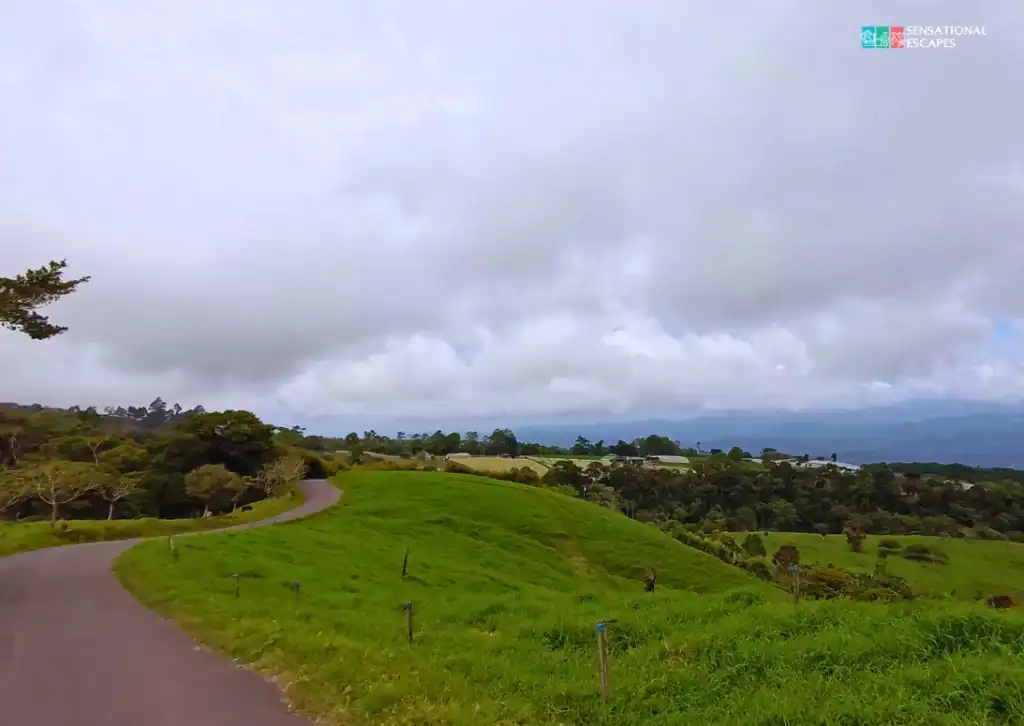
Entrance Fee & Opening Times
Guayabo National Monument is open every day from 8:00 a.m. to 3:30 p.m., including holidays. I actually went there on a holiday not long ago and had no issue getting in and everything was open and running as usual.
The entrance fee is $5.65 per person, and payment is only accepted by credit card. They don’t take cash, so it’s good to keep that in mind before you go. The process was simple and quick during my last visit.
There’s a parking lot right next to the main entrance. It’s not huge, but it has enough space for several cars, and the best part is that it’s free. I had no trouble finding a spot, even though I arrived during a holiday.
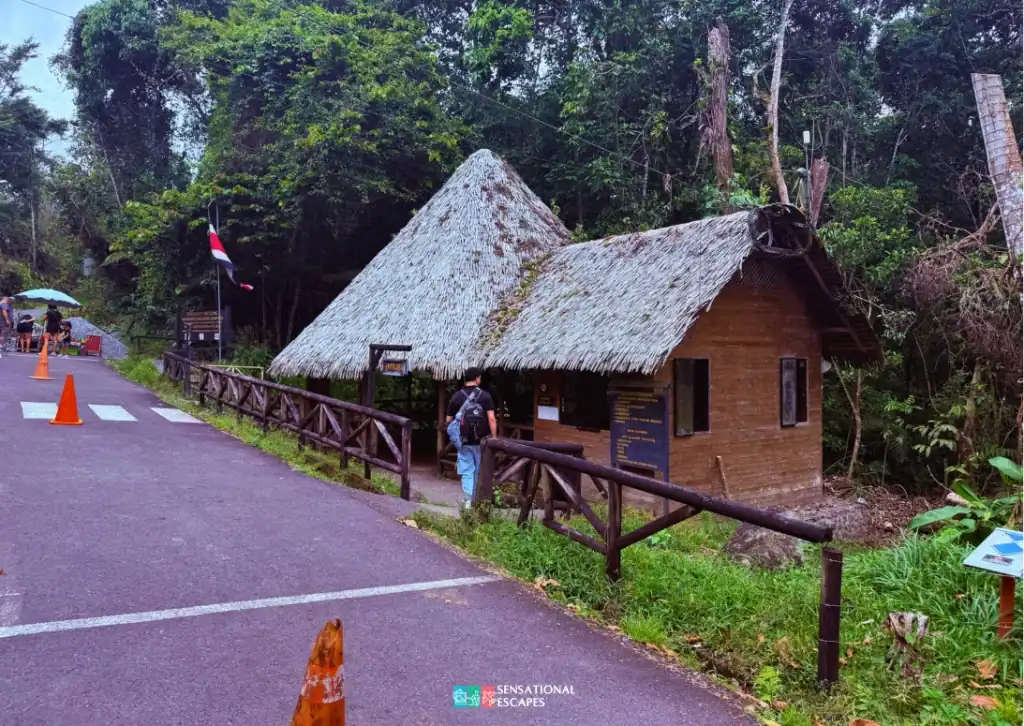
The History of Guayabo National Monument
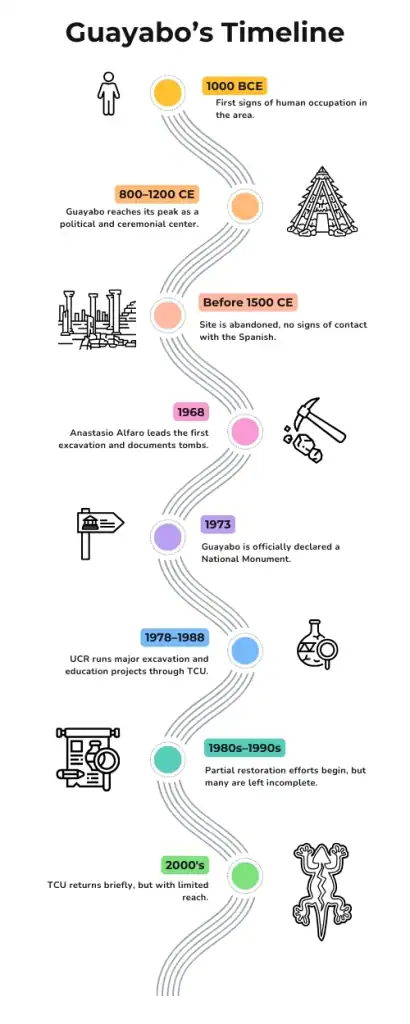
The first time I visited Guayabo, I was just a kid. I remember walking through the stone paths without fully understanding what I was looking at. Later, I learned a bit more in school and even came back during an educational field trip. But to really understand its history and write this section for the blog, I read several books and university research studies. It turns out there’s a lot more to Guayabo than what most of us learn growing up.
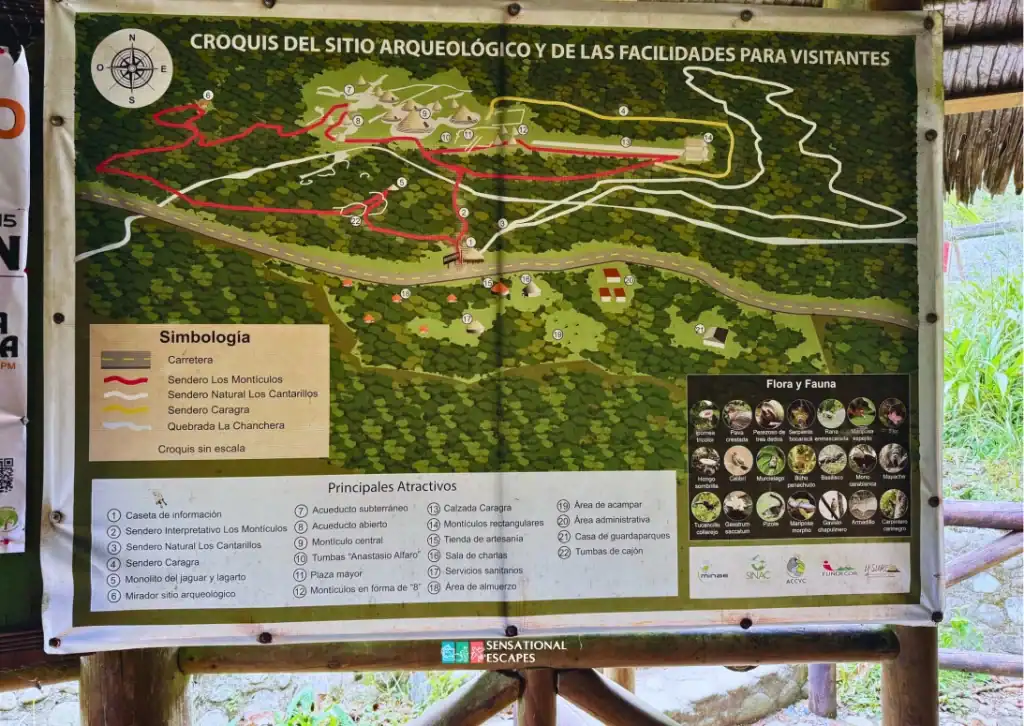
Discovery and First Excavations (1891–1967)
Guayabo first came to public attention in the 1880s when a local landowner found various archaeological artifacts on the property. The most important discoveries, however, came in the 1890s, when Anastasio Alfaro, the Director of the National Museum of Costa Rica, began formal excavations at the site, which was then known as “El Cementerio de Guayabo” (The Guayabo Cemetery).
During these excavations, Alfaro uncovered stone mounds, an aqueduct, tombs, petroglyphs, ceramic and gold objects, and carved stone figures. The work was focused mainly on recovering pieces for museum display, not on detailed scientific study. At the time, the government did not have trained professionals or the budget to continue research, so once the excavation ended, Guayabo was left untouched and largely forgotten until the mid-20th century.
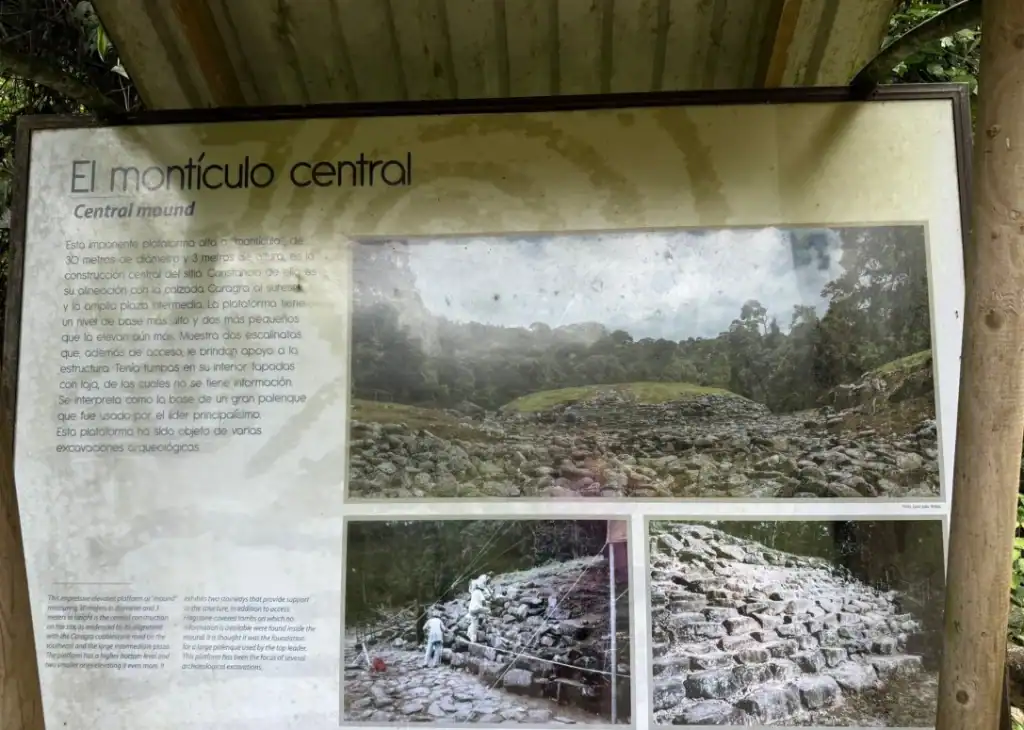
Scientific Research Begins (1968–1977)
For much of the first half of the 20th century, the land where Guayabo is located was privately owned, and the owner did not allow excavations. It wasn’t until 1954 that the owner’s widow invited Carlos Aguilar, the first Costa Rican archaeologist, to visit and observe the site.
Ten years later, the property was purchased by the government. In 1968, Aguilar returned, this time to lead formal excavations. His work revealed that Guayabo was far more than a cemetery—it was a planned settlement with roads, platforms, aqueducts, and ceremonial structures. These findings significantly changed the understanding of the site and contributed to its designation as a National Monument in 1973.
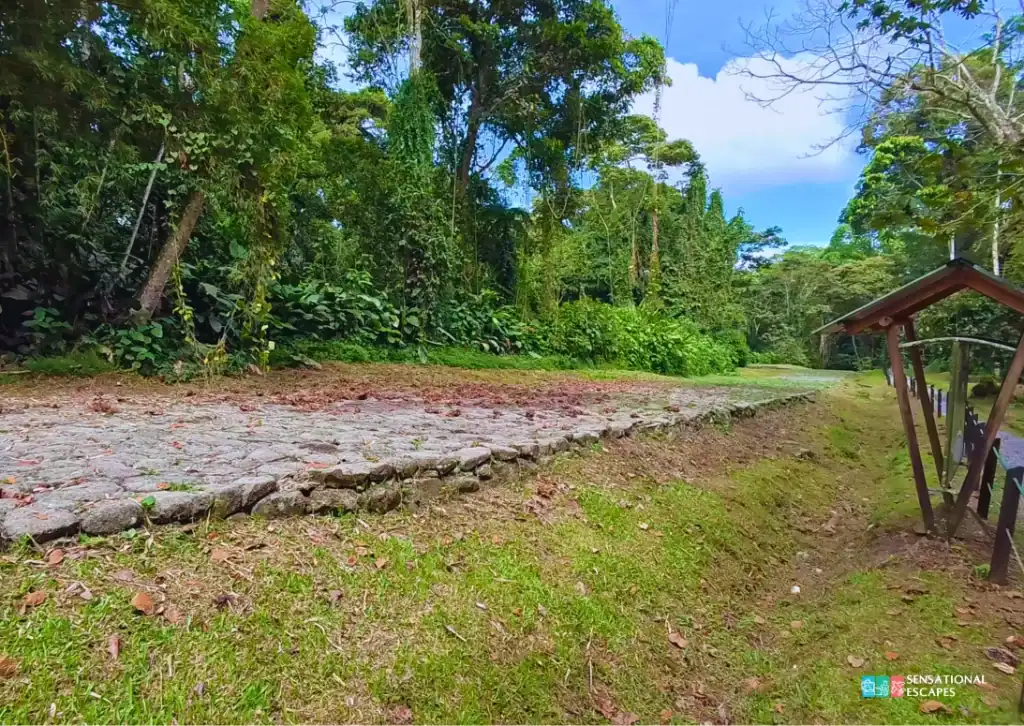
Community and University Involvement (1978–1988)
Between 1978 and 1988, the University of Costa Rica (UCR) organized yearly archaeological projects through a student program called Trabajo Comunal Universitario (TCU). his was the most active decade in terms of research at Guayabo. Students, professors, and specialists worked together not only to excavate and document the site but also to involve the local community through education and cultural heritage programs.
Over these ten years, the TCU became a bridge between science and the community, combining fieldwork with public outreach. Many of the structures visible today were documented or partially restored during this period, and local residents were trained as guides to help share the history of the site with visitors.
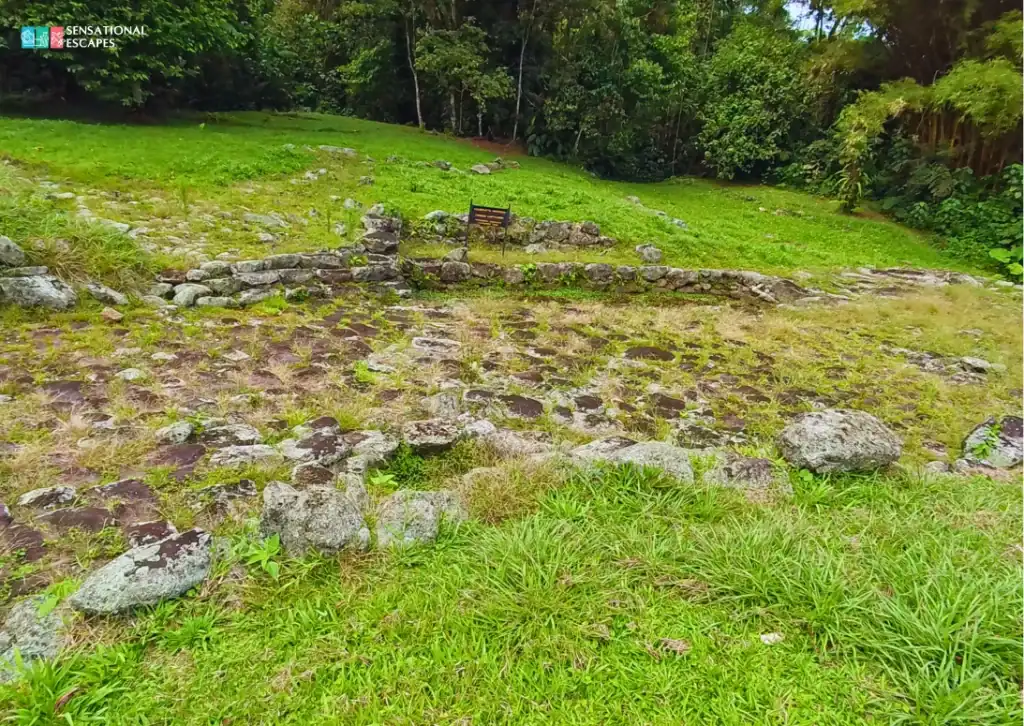
Restoration Plans and Later Developments (1989–Present)
After the active TCU period of the 1980s, archaeological work at Guayabo slowed down. Some restoration plans were proposed in the 1990s, but many were left unfinished due to limited funding and lack of coordination. In 2000, the TCU briefly returned, though without the same scale as before.
In later years, notable studies included:
- 2018 – A ground-penetrating radar (GPR) survey revealed buried features such as the Calzada Palomo, its staircase, and nearby spaces.
- 2019–2020 – Analysis of previously excavated artifacts shed new light on the pre-Columbian diet at Guayabo, findings that were shared publicly in 2023.
Today, the focus remains on conservation, maintenance, and education rather than large-scale new excavations.
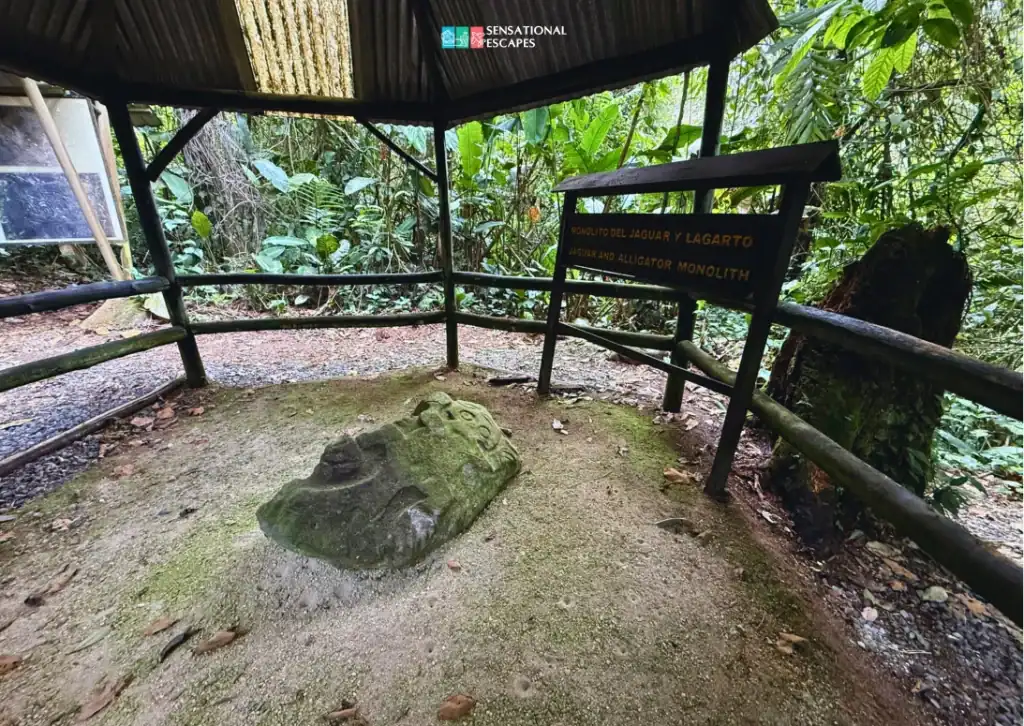

A Guayabo petroglyph shows a lizard and a jaguar facing each other. Archaeologist Carlos Aguilar suggests it may symbolize a clash between two cultures with different religious beliefs—one from the Central Caribbean and the other from the North Pacific and Mesoamerica.
What We Know About Ancient Guayabo
Research shows that Guayabo was one of the most advanced settlements of its time in Costa Rica. Excavations and lab studies found 44 mounds, 3 plazas, 4 reservoirs, and 3 aqueducts. Two of these aqueducts were for drinking water, and one was for rainwater drainage. All were connected by stone-paved roads, stairs, and bridges.
One of the most impressive details is that part of the ancient aqueduct still works today. This engineering achievement is so remarkable that the site has been recognized as a World Civil Engineering Landmark by the American Society of Civil Engineers, one of the most prestigious organizations in the field. This designation honors the techniques and construction skills developed by Guayabo’s first inhabitants, which have lasted for centuries.
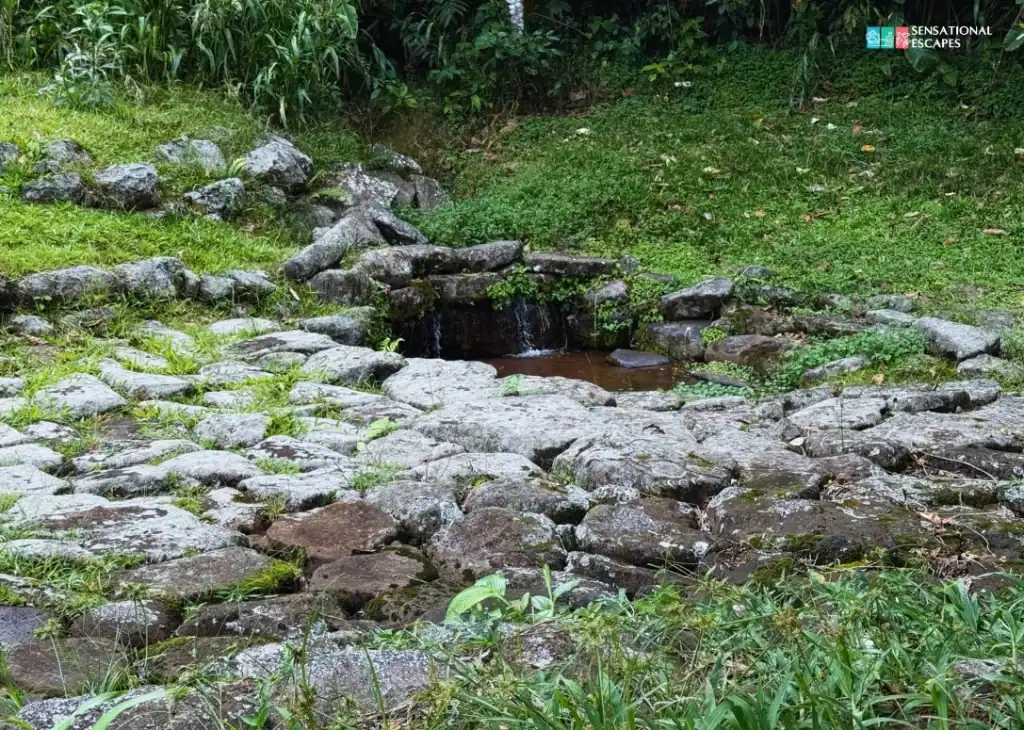
Guayabo was occupied from around 1000 BCE to 1450 CE, but the ruins we see today mostly date from 800–1500 CE, when the site reached its peak. It likely served as the political, ceremonial, and residential center of a regional chiefdom.
One of the biggest mysteries is why it was abandoned long before the arrival of the Spanish. There are no clear signs of war, destruction, or natural disaster—only unanswered questions about why its people left.
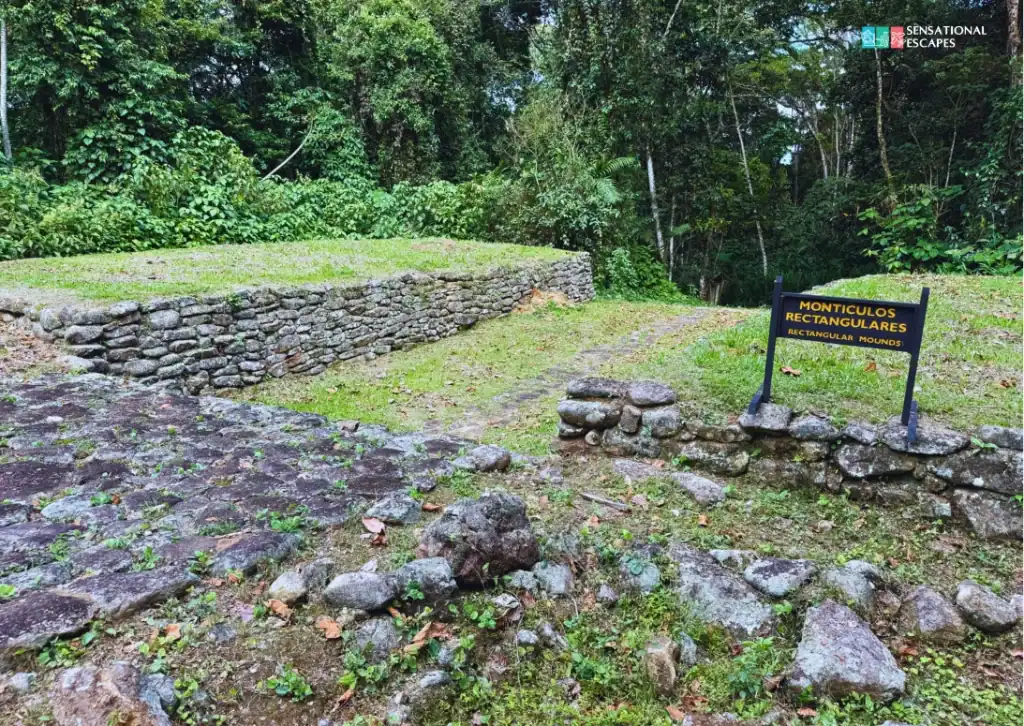
Best Time to Go
One of the things I like about visiting Guayabo is that the weather is pretty stable year-round. The temperatures don’t change much: from 27°C to 28°C during the day, and around 19°C to 20°C at night. That means you don’t need any special clothing, no matter the season.
If you’re planning your visit and want to make the most of it, I recommend going between December and March. These are the months with the clearest skies and it’s the best time to walk around, take photos of the ruins, and enjoy the views without having to deal with rain or fog.
During the rainy season, from May to October, it’s a different story. The sky is usually overcast, and the chances of rain are much higher. If you visit during this time, bring a raincoat, waterproof shoes, and be ready for muddy trails and cloudy skies.
November is a bit of a transition month. The rain starts to ease up, and clear skies become more common, so it can also be a good time to visit if you want fewer crowds but better weather.

Tips for Visiting Guayabo National Monument
- Consider hiring a local guide: As a Costa Rican, I really recommend this. Even though the park has signs in both Spanish and English, going with a guide makes the visit more interesting. There’s a local association of guides who know the area well and offer tours in both languages. The cost is around $40 for a group of three, but you’ll need to book in advance. This price doesn’t include the entrance fee.
- Wear closed-toe shoes – The trails are well-maintained, but it’s still a forested area. There are lots of ants and uneven ground in some places. Sneakers or hiking shoes are your best bet.
- Bring insect repellent. You’ll be in a forested area, and the insects can be annoying especially during the rainy season.
- Pack light but be ready for rain – Even in the dry season, it can rain without warning. I always carry a light rain jacket, especially if I go during the rainy months.
- Bring cash: Although entrance fee is paid by card only, there are sometimes local vendors selling crafts and even food outside the park entrance. However, they only accept cash payments.
